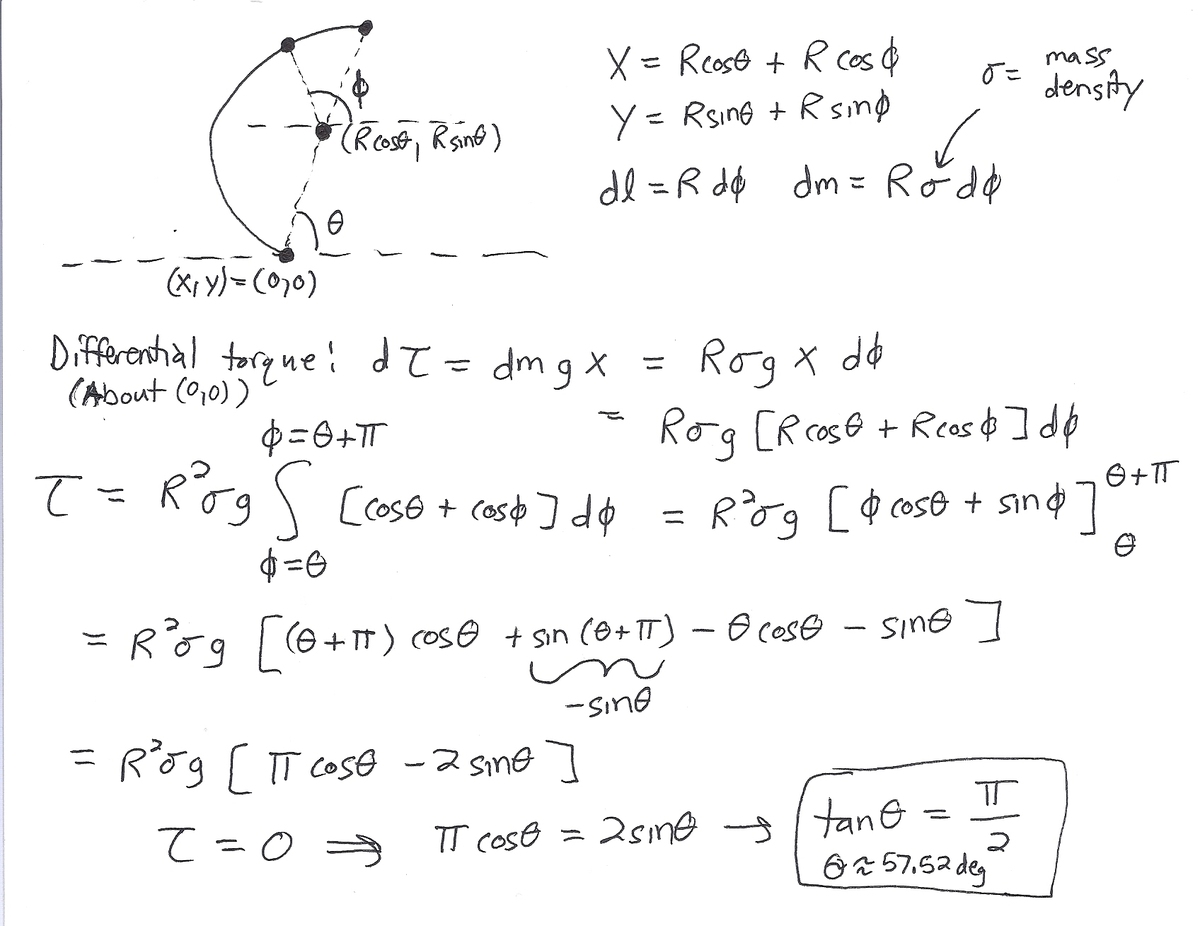Balancing a Semicircle Frame
A semicircle with a constant mass per unit length is placed on a horizontal surface such that it doesn't topple in any direction. The touch point P is assumed not to slip from the surface. Also, the imaginary line connecting the two end points of the semicircle forms an angle of θ with the surface.
Find the measure of θ (in degrees) to 2 decimal places.
The answer is 57.52.
This section requires Javascript.
You are seeing this because something didn't load right. We suggest you, (a) try
refreshing the page, (b) enabling javascript if it is disabled on your browser and,
finally, (c)
loading the
non-javascript version of this page
. We're sorry about the hassle.
2 solutions
If it is not a semicircle but an arc sustaining an angle 2A in radians at the center,
y
c
.
m
.
=
A
S
i
n
A
∗
r
a
n
d
f
o
r
a
s
e
c
t
o
r
w
i
t
h
u
n
i
f
o
r
m
a
r
e
a
d
e
n
s
i
t
y
y
c
.
m
.
=
3
2
∗
A
S
i
n
A
∗
r
.
Just additional information based on the above nice solution.
+1).
Now I know where I went wrong... sorry for the trouble... :(

For the semicircle not to topple in any direction, the center of mass of the semicircle must be vertically on top of the contact point P . Therefore we need to find the center of mass of the semicircle.
Consider a semicircle of radius r as shown in the figure. Due to symmetry, the center of mass lies on y -axis. Let the center of mass be y c . m . from the origin and the mass per unit be λ . Then we have:
y c . m . = m ∫ 0 π λ r y d ϕ = λ π r ∫ 0 π λ r 2 sin ϕ d ϕ = π r ⋅ cos ϕ ∣ ∣ π 0 = π 2 r where m = λ π r is the mass of the semicircle
We note that tan ( 9 0 ∘ − θ ) = r y c . m . = π 2 ⟹ 9 0 ∘ − θ = 3 2 . 4 8 2 ⟹ θ = 5 7 . 5 2 .